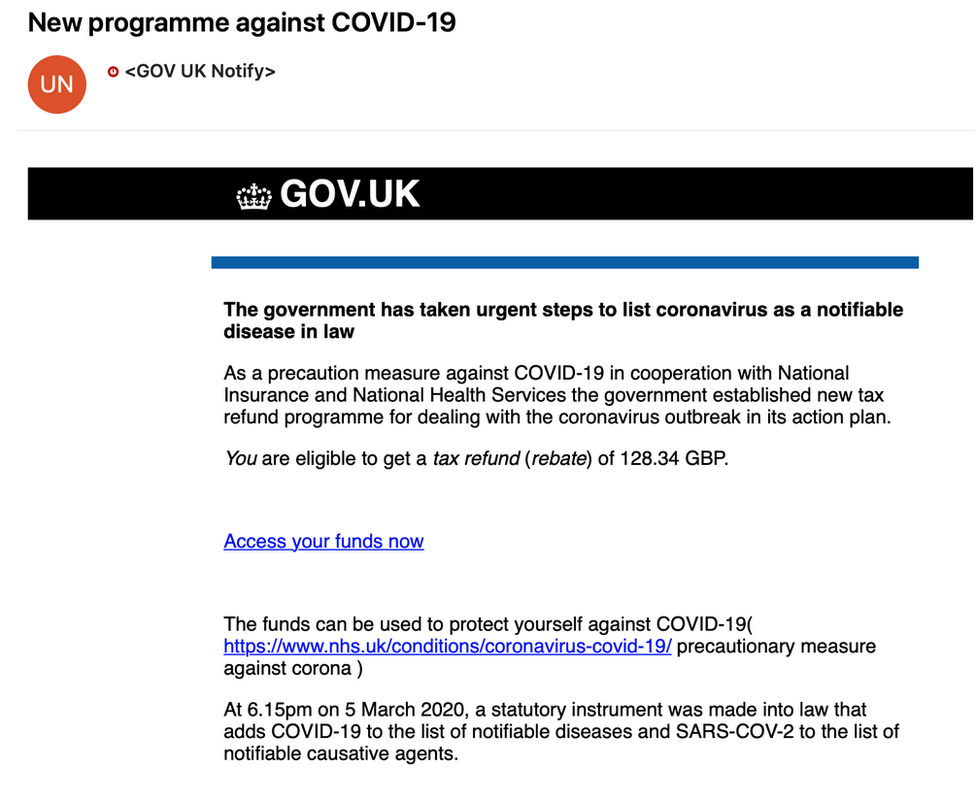Coronavirus outbreak has been declared as pandemic by the World Health Organization. Hackers are taking advantage of concerns of COVID-19 by using fake coronavirus maps to infect visitors with malware.
Phishing emails written in English, French, Italian, Japanese, and Turkish languages have been found.



Hackers and cybercriminals have been leveraging the hype and fear connected with the growing COVID-19 pandemic as a tool to steal passwords and data.
Researchers with IBM X-Force and Kaspersky have discovered that hackers are sending spam emails to people in the hopes of infecting smartphones and computers with malicious software.
Just as doctors say frequent hand-washing and respiratory hygiene is the best defense against the coronavirus, cybersecurity professionals stress that computer users need to be more wary of what they click, such as not downloading an email attachment from an unknown source.
Remote workers may inadvertently introduce major threats as a result of the disruptions from the virus outbreak.
Hackers based in China have tried to attack victims in Vietnam, the Philippines and Taiwan with lures using “legitimate statements by political leaders or authentic advice for those worried about the disease, likely taken from public sources” in late February and early March.
The emails sent to people in Japan claim that the respiratory illness has infiltrated the country, and urge the receiver to open an email attachment to learn more information. If the receiver opens the file, malicious software harvests personal data and can inject other inflammatory software.
That means hackers can gain access to your personal files and copy them.
How Hacker & Cybercriminal can attack?
Hacker & Cyber-criminals are targeting individuals as well as industries, including aerospace, transport, manufacturing, hospitality, healthcare and insurance.
Phishing emails written in English, French, Italian, Japanese, and Turkish languages have been found.
Here are some Phishing emails images relating to coronavirus,
Security experts say a spike in email scams linked to coronavirus is the worst they have seen in years.
US officials have accused Russia of creating thousands of fake Twitter, Facebook, and Instagram accounts to spread conspiracy theories that theories that the US was somehow the originator of the virus.
cybersecurity researcher Shai Alfasi from Reason Cybersecurity Ltd., the fake maps were found to be attempting to infect unsuspecting visitors with the AZORult malware.The malware, first discovered in 2016, is an information stealer that makes off with browsing history, cookies, ID/passwords, cryptocurrency and more. An AZORult variant, designed to create a new, hidden administrator account on the infected machine in order to allow Remote Desktop Protocol connections, was also detected.
The fake website created comes across as the genuine maps for tracking but has a different URL. Presently, only Windows users are affected by this, but it can soon spread to other operating systems as well.cybersecurity researcher Shai Alfasi from Reason Cybersecurity Ltd., the fake maps were found to be attempting to infect unsuspecting visitors with the AZORult malware.The malware, first discovered in 2016, is an information stealer that makes off with browsing history, cookies, ID/passwords, cryptocurrency and more. An AZORult variant, designed to create a new, hidden administrator account on the infected machine in order to allow Remote Desktop Protocol connections, was also detected.
Tips
- Don’t open sketchy links sent to you via text or email. Don’t answer suspicious phone calls, and don’t download attachments that you didn’t ask for.
- Use strong passwords and pins to keep everything locked, and two-factor authentication mechanisms wherever possible.
- Avoid downloading software from unofficial websites. Hacker & Cyber-criminals are attaching malware in the software.







0 Comments